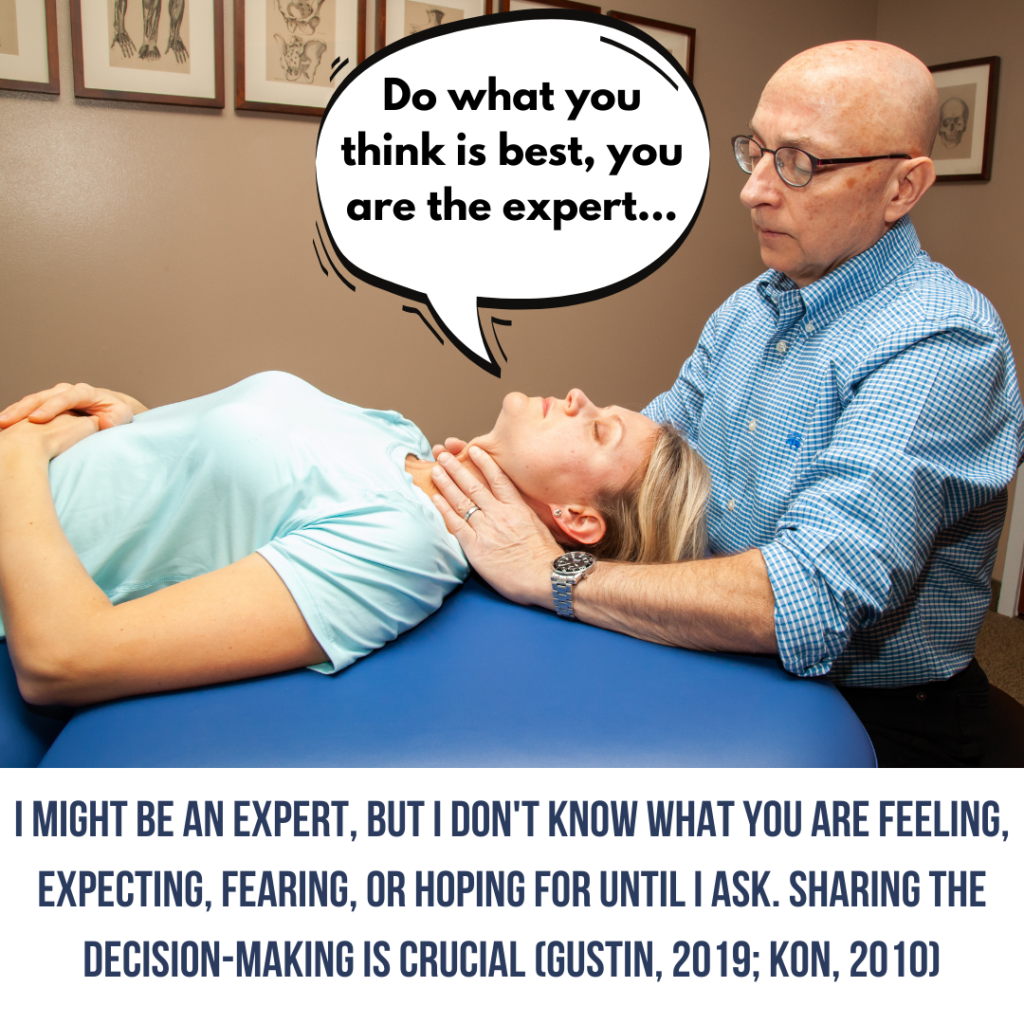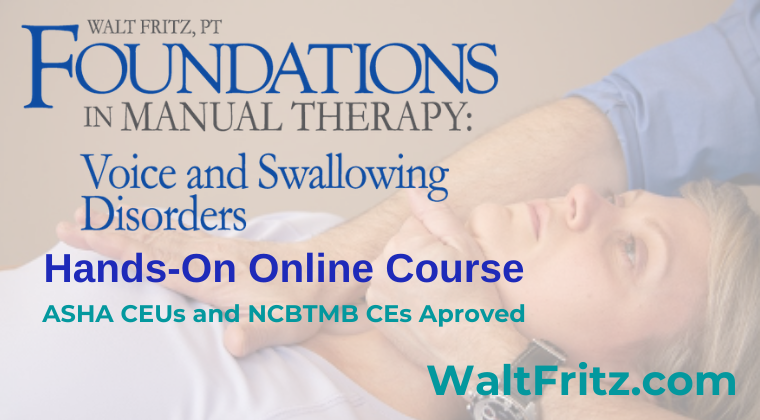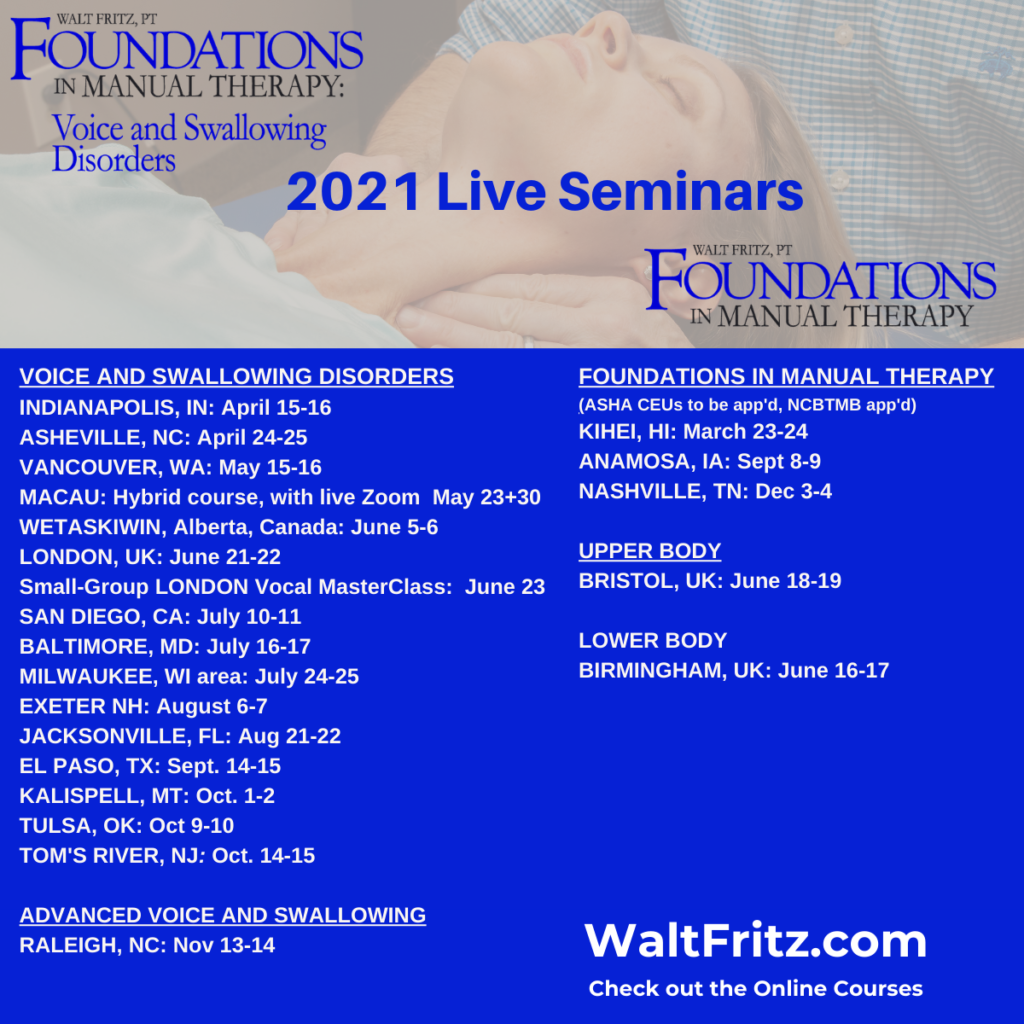Flipping the Script: Shared Decision-Making
Hi new patient, I’m the expert. I a physical therapist (no DPT, sorry) with 35 years of experience. Those years include a ton of continuing education and independent research. They include tens of thousands of patient-contact hours. I’ve been an educator in the continuing education field since 1995. With all that experience, I should know a thing or two. Right?
Wrong.
I do know a lot and have seen various models of intervention work quite nicely for a range of disorders, so much so that I feel I can reach for a certain tool (metaphor) when you come into my office with a certain complaint. But a wise person once told me that if you already know what you would do or what you would use with a certain patient and their problem before they come into your office, then you don’t know what you are doing. You are complex. I’m complex. Put the two together, and you have double complexity.
While I know a lot, there is one thing missing when you walk in my clinic door. I don’t know what you are feeling, fearing, expecting, and hoping for until I ask. If you don’t tell me, assuming I know what to do, we are missing a unique opportunity to help you in ways I alone cannot accomplish.

I could wow you with a bunch of research citations that speak to just why you need to speak up, but you are looking to feel better, not to be bored with what seems like my ego telling you about a cool study or two. I know that you expect me to determine what is wrong with you and to know what to do to help you. However, while I might have some ideas, I need your help. I need your help to determine if what we do, be it manual therapy or movement-based work, feels useful. Not from a theoretical perspective, but to your body and brain. For instance, does it feel like the stretch we are doing is replicating or calming your symptoms? Does it feel like I am doing something that might be helpful? If not, does it feel like what we are doing right now could be harmful? If so, I’m going to stop immediately. I’m not going to try to talk you into biting on a stick while I dig your pain out of your body with my manual therapy or tell you the No Pain, No Gain crappy story many like to believe.
What’s that? You say that you like deep pressures? You think it needs to hurt to help? OK, then let’s negotiate this whole pressure thing. I’m not going to hurt myself just to help you, nor am I going to do so much pressure or use so much resistance with movement/exercise to put you at risk, but maybe we can meet in the middle. How’s that? Do you feel like I’m having a conversation with your symptoms? Is the pressure enough? What, you’d like a little less? No problem, is this better?
So right now, with the exercise or stretch that we are doing, do you feel the connection to your problem? Yes? OK, does it feel like this exercise/stretch might be helpful for that? Great, then let’s spend some time with it.
This is what I meant about sharing decision-making. I told you that how I treat patients is different, as if you left it up to me, I may have never done something that you found perfectly useful and potentially helpful. What’s that? Why don’t other clinicians ask you to take part? Dunno, though I think that they should.
Cheers,
Walt Fritz, PT
Foundations in Manual Therapy Seminars and The Pain Relief Center
References
1. Anjum, R., Copeland, S., & Rocca, E. (Eds.). (2020). Rethinking Casuality, Complexity, and the Unique Patient. Springer Open.
2. Bainbridge, L. A. (2006). Informed Shared Decision-Making: A Model for Physical Therapy Education and Practice? Physiotherapy Canada, 74-81.
3. Bizzari, P. F. (2019). Manual Therapy: Art or Science? In Physical Therapy Effectiveness.
4. Coronado, R. B. (2017). Manual physical therapy for chronic pain: the complex whole is greater than the sum of its parts. Journal of Manual & Manipulative Therapy, 25(3), 115-117.
5. Gustin, A. (2019). Shared decision-making. Anesthesiology Clin, 573-580.
6. Kolb, W. H. (2020). The evolution of manual therapy education: what are we waiting for? ournal of Manual & Manipulative Therapy, 28(1), 1-3.
7. Kon, A. (2010). The Shared Decision-Making Continuum. JAMA, 903-904.
8. Laski, H. (2020). The Limitations of the Expert. Society.
9. Moore, C., & Kaplan, S. (2018). A Framework and Resources for Shared Decision Making: Opportunities for Improved Physical Therapy Outcomes. Physical Therapy, 1022-1036.
10. Petty, N., Thomson, O., & Stew, G. [. (2012). Ready for a paradigm shift? Part 1: Introducing the philosophy of qualitative research. Manual Therapy, 17(4), 267-274.
11. Petty, N., Thomson, O., & Stew, G. [. (2012, October). Ready for a paradigm shift? Part 2: Introducing qualitative research methodologies and methods. Manual Therapy, 17(5), 378-384.
12. Tousignant-Laflamme, C. S. (2017, July). Does shared decision making results in better health related outcomes for individuals with painful musculoskeletal disorders? A systematic review. J Man Manip Ther., 25(3), 144-150.
Please consider checking out my upcoming live seminars and online course offerings, including a full hands-on online course. You can find the information here. Also, read up on my in-person seminars at the links in the menu on this page.




Sorry, comments are closed for this post.